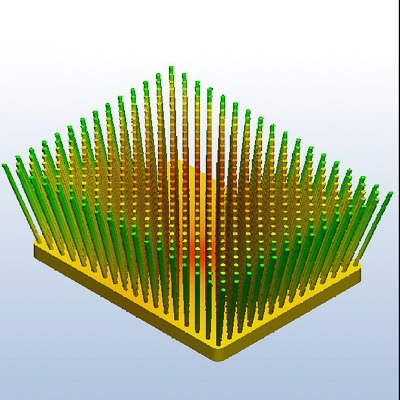Heatsink Airflow

The reason that heatsink air flow is so important is because process of heat removal requires cooler air (coming in the form of air current or ventilation, for example) to carry heated molecules off the surface of the device. This process is called convection, and while some heatsinks are designed as passive - they don't require fans for convection to occur - others use forced convection, by way of a fanning system, so that the necessary amount of cooling can take place. It is important to note that the heatsinks designed to be passive will not respond well to forced convection because of the overall design structure that has no clear passageways for the air to carry through. While multiple fins with smaller thicknesses grouped together on a single heatsink may greatly benefit the level of surface area, the implementation of forced convection for the heatsink's airflow will undoubtedly be obstructed. In order to design a cooling device more amenable to the forced convection heatsink airflow requirements, the fins must be placed so that there is room for free airflow. What it comes down to is finding the right balance between the need for a high level of surface area and the creation of successful heatsink airflow. Having a large number of fins is conducive to more surface area, but it negatively affects airflow demands.
Another important aspect of heatsink airflow design is the noise level, and how well customers will tolerate it. A designer may well have mapped out the perfect cooling system for a CPU, but if the fanning system is too noisy, the product will be less marketable. Therefore another trade off is required, this time between the superior functioning of airflow cooling and the noise level involved.
For Your Next Project, Contact CoolianceToday!
High reliability thermal solutions & precision metal products.
